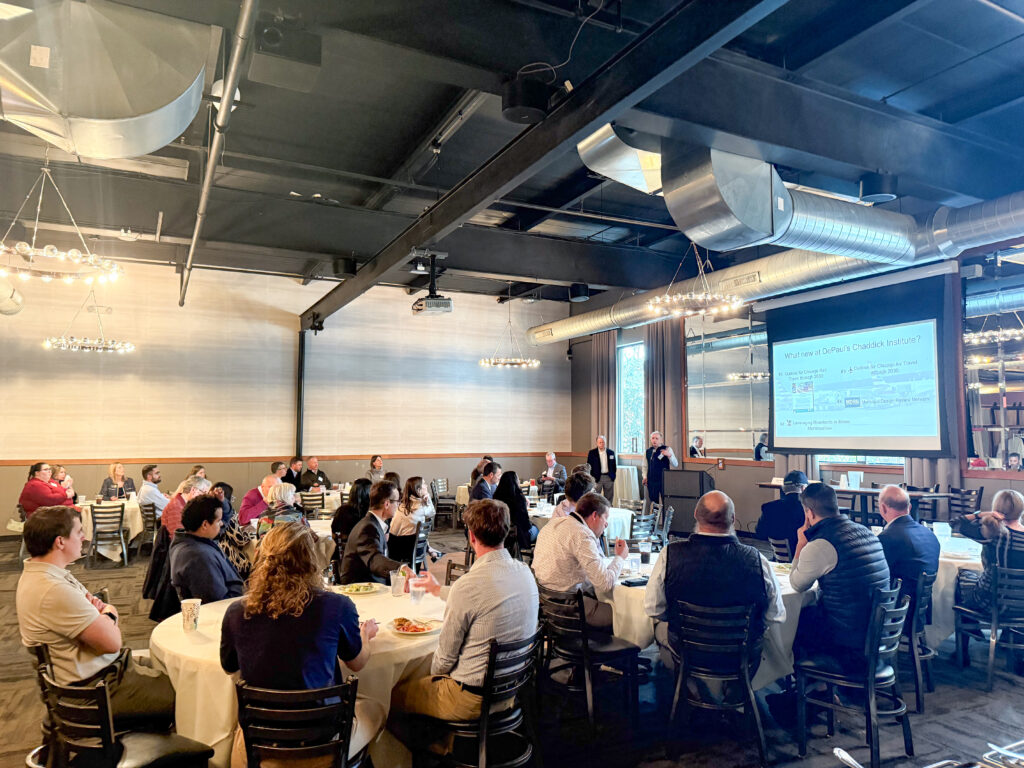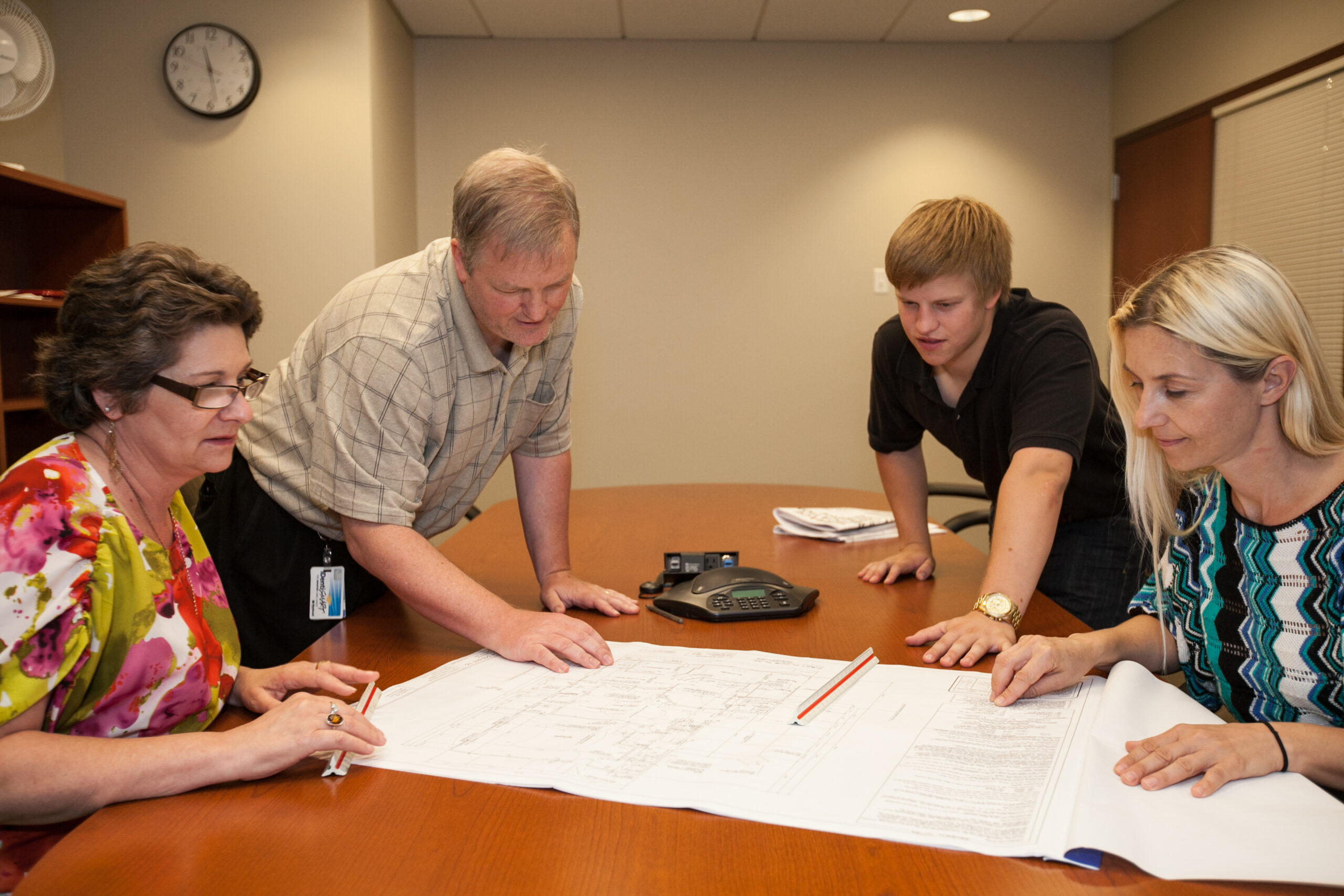As the national economy continues to recalibrate after years of pandemic-driven disruption, communities across Chicagoland are asking a key question: are we returning to the pre-2020 economic norm, or has the post-pandemic era rewritten the rules?

That question was at the center of a recent presentation by Dr. Joe Schwieterman of DePaul University and Chris Brewer of AECOM, who offered data-driven insights into Lake County, Illinois, and its evolving role in Chicagoland’s regional economy. Their findings, coupled with business outreach information presented by Lake County Partners (LCP), paint a picture of a county that is both grounded in its strong industrial and life sciences base and nimble enough to adapt to new economic realities.
A Strong Five Year Performance
“From 2021 through 2025, Lake County has delivered impressive results in both job creation/retention and investment attraction,” notes LCP Senior Director of Business Development. “Over these last five years, LCP generated 4,033 new jobs, retained 2,751 existing jobs, and secured a remarkable $1.79 billion in direct investment.”
These numbers are more than statistics—they represent strategic wins across industries that define Lake County’s modern economy: life sciences, advanced manufacturing, professional services, and mixed-use development.
In 2025, Lake County continues to benefit from an active pipeline of investments spanning a diverse range of sectors. Key projects currently in progress include:
- Life Sciences and Manufacturing
Major employers and investors such as Plano Pharmaceuticals, Flex, AbbVie, Tuf-Tite, MSI Express, and Belle Aire Creations are expanding or modernizing their operations. These companies contribute not only to Lake County’s economic base, but also to its global reputation as a hub for life sciences and precision manufacturing. - Office, Housing, and Institutional Development
Lake County’s economic vitality is also supported by strategic real estate and community investments. Projects like Fortune Brands Innovations, Miller Cooper & Co., and new residential developments such as Fox Lake Crossing and Lakeview Fox Lake highlight how housing and employment growth are increasingly intertwined. The new Lake County Regional Office of Education further reinforces the region’s commitment to workforce development and educational infrastructure.
Collectively, the major projects managed by LCP in 2025 showcase the multifaceted nature of Lake County’s growth—balancing industrial investment with livability and workforce support that enhances the area’s high quality of life.
Based on the recap provided by LCP, economic development in Lake County is not slowing down. As the staff nears the end of the year, it is managing 34 active projects at various stages of development in the pipeline that will carry into 2026. This steady stream of activity underscores both investor confidence and the county’s ability to attract and retain diverse businesses, even amid shifting economic conditions.
How Are Economic Trends Playing Out in Lake County and Chicagoland?

Population dynamics in Lake County are nuanced. Western townships are less constrained by existing development, and their open spaces continue to experience steady population growth, reflecting Lake County’s ongoing appeal as a place to live, work, and raise a family.
At the same time, the overall labor force growth rate has slowed since 2010, mirroring national demographic trends. With baby boomers retiring and younger workers entering the market at a slower pace, maintaining a strong workforce pipeline will require deliberate efforts in education, training, and talent attraction—all elements that LCP has focused on in recent years with partners across Lake County.
Unemployment & The Labor Force
Lake County’s unemployment rate stood at 4.6% in August 2025, a figure that economists often consider indicative of “full employment.” This strong labor market signals economic stability, but it also reveals emerging challenges.
With the labor force operating near full capacity, workforce availability and housing supply are increasingly viewed as constraints to future growth. Employers face tighter competition for skilled workers, and communities must balance job expansion with residential development that attracts and retains talent.
Since 2010, Lake County has experienced a narrowing pace of job creation, a trend that has become more pronounced since 2021. While this could appear concerning at first glance, it also reflects a maturation of the regional economy—one that prioritizes high-value, sustainable employment over rapid but uneven growth. Manufacturing and life sciences jobs, for example, often bring higher wages and greater stability compared to the retail or service sectors that have been contracting.
E-Commerce
Few trends illustrate post-2020 transformation more clearly than the impact of e-commerce. As online shopping has become a dominant force, the geography of retail spending has shifted dramatically because sales tax revenue is increasingly generated where people live rather than where they shop.
“This transition has resulted in retail job losses since 2020, yet it has also sparked new employment opportunities in logistics, distribution, and technology infrastructure tied to e-commerce,” notes Chris Brewer, Vice President at AECOM. “Lake County’s position within the regional transportation network gives it a strategic edge in capturing these new forms of economic activity.”
Office Space
Office space dynamics have also undergone a structural shift. The demand for traditional office environments—especially older, single-use buildings—has softened in the wake of hybrid work trends. However, not all office space is created equally. Data show that offices located within mixed-use districts, where employees can access housing, dining, and recreation, have proven far more resilient. These spaces align with the preferences of today’s workforce, which values flexibility, walkability, and community engagement.
For developers and local governments, the message is clear: adaptation and reinvestment in mixed-use environments will be key to sustaining the office market’s relevance in the years ahead.
Transportation
Lake County’s position between Chicago and Milwaukee, and its vast transportation networks make it a compelling location for business growth and talent relocation. This is further reinforced by investment and government work plans that have prioritized transportation and safety.
Multiple projects have highlighted another major construction season in Lake County, particularly as Illinois seeks to modernize infrastructure locally and across the state through the Rebuild Illinois program. These projects hit every corner of the county, including Deep Lake Road, the Robert McClory Trail, Old McHenry Road, Arlington Heights Road, and Deerfield Parkway.
Ridership on the several Metra lines that serve Lake County UP continue to steadily rebound since their low points in 2020, and public transportation remains front and center for legislators as they look to engage residents and offer reliable service.
At O’Hare International Airport, investments have provided for the addition of gates at T3 and T5, giving the airport the distinction of the largest number of gates in the world. This summer, ground was also broken to prepare for the $1.3 billion Terminal D, a 19-gate satellite concourse. O’Hare just had its busiest summer ever.
Looking Ahead: Challenges & Opportunities

The story emerging from Lake County’s data is one of resilience amid transition. The region’s traditional strengths—its diverse industrial base, proximity to major markets, and highly educated workforce—continue to underpin economic vitality. Yet, like much of the nation, Lake County is navigating a new economic landscape shaped by technological disruption, demographic shifts, and evolving work patterns.
Moving forward, success will hinge on a few critical strategies:
- Expanding Workforce Housing – Ensuring adequate and affordable housing for workers across income levels.
- Investing in Workforce Development – Strengthening partnerships between schools, colleges, and employers to meet emerging skill demands.
- Repositioning Commercial Assets – Transforming aging office and retail properties into mixed-use or innovation-friendly spaces.
- Leveraging E-Commerce Growth – Capitalizing on logistics and supply chain opportunities that align with the county’s infrastructure strengths.
Fortunately, leaders in Lake County have worked together to position it well to tackle these challenges head-on. As the 2020 pandemic came to a close, LCP led a robust public engagement process to solicit feedback and create a Comprehensive Economic Development Strategy that provides clear direction to address all of these trends.
“We now have a community-endorsed playbook to guide our work plan and solidify Lake County’s prominence as a model for equitable development,” notes LCP Director of Strategic Initiatives, Steve DeBretto. “LCP’s role in economic growth has never been clearer, and we’re excited to build on our momentum to deliver progress in the years ahead.”